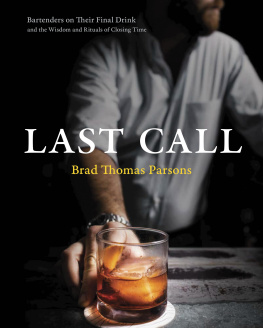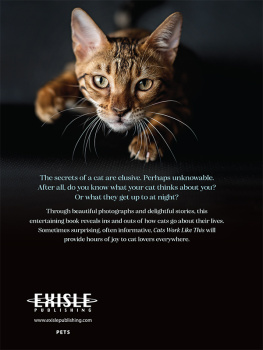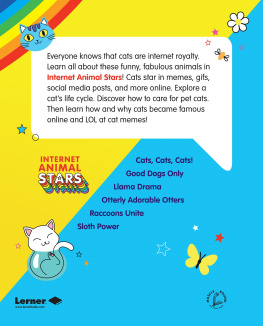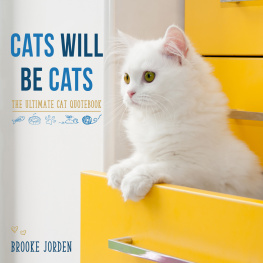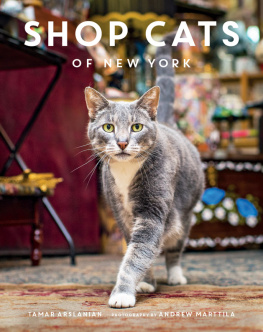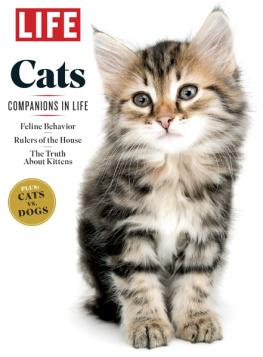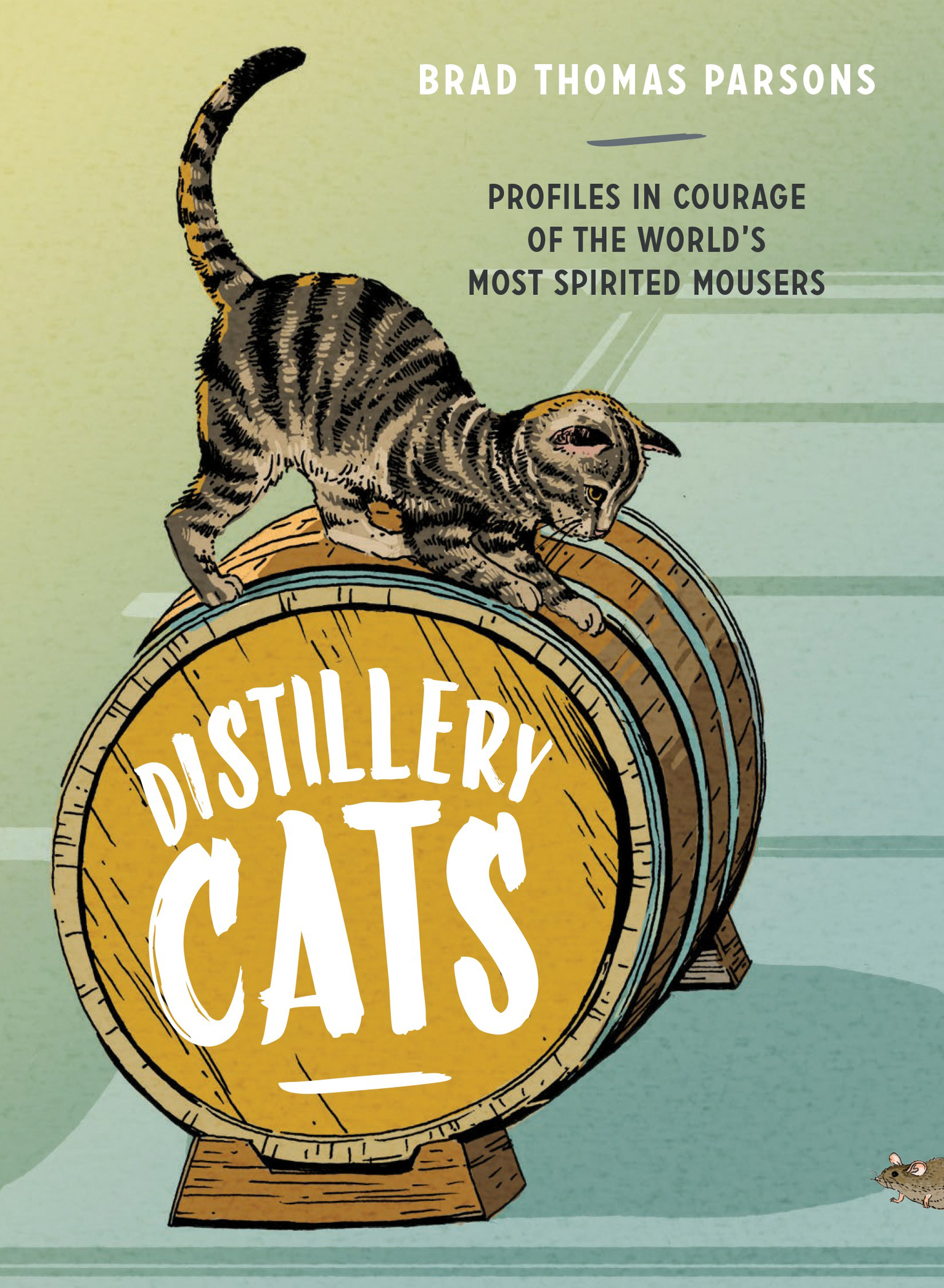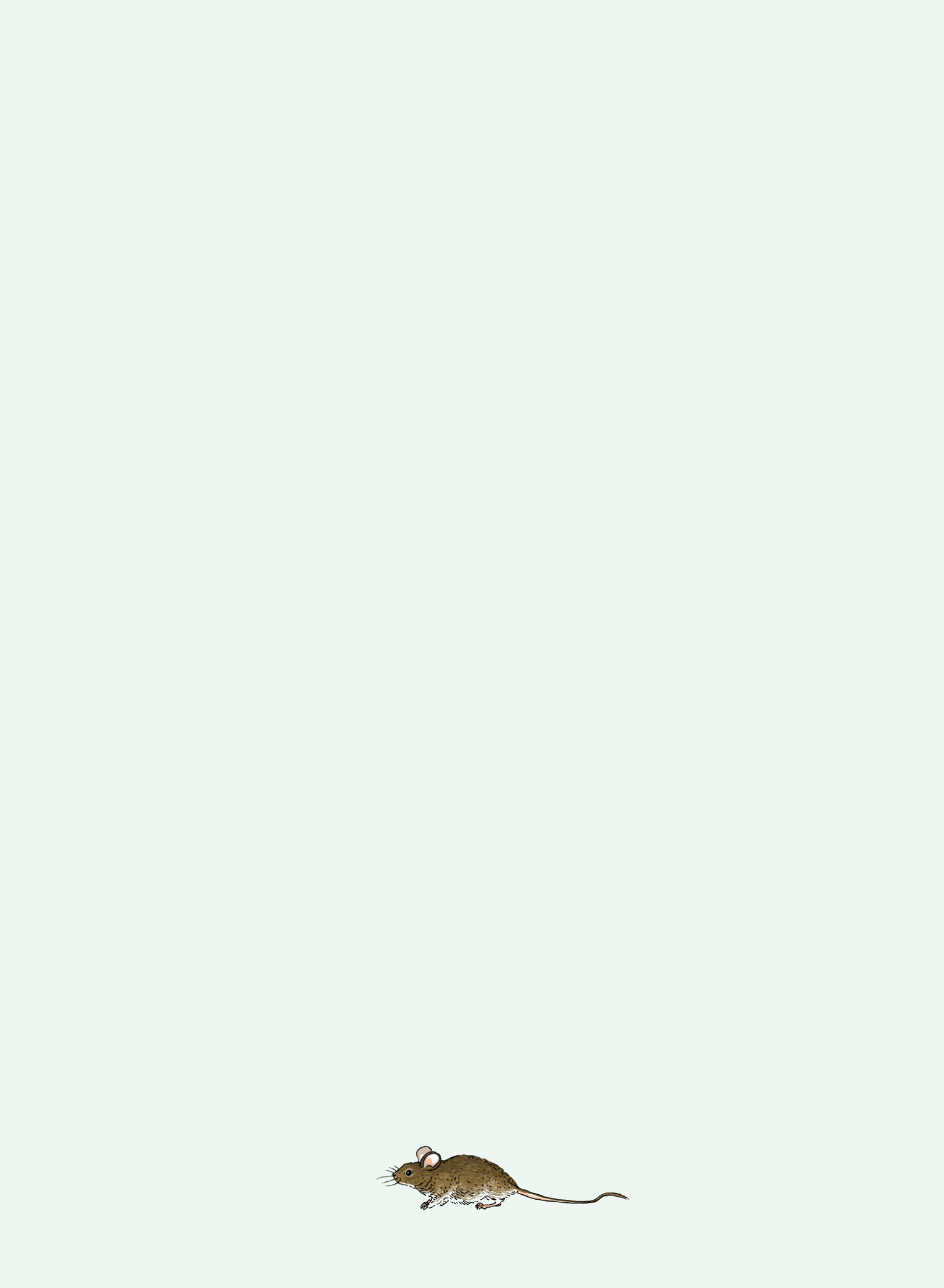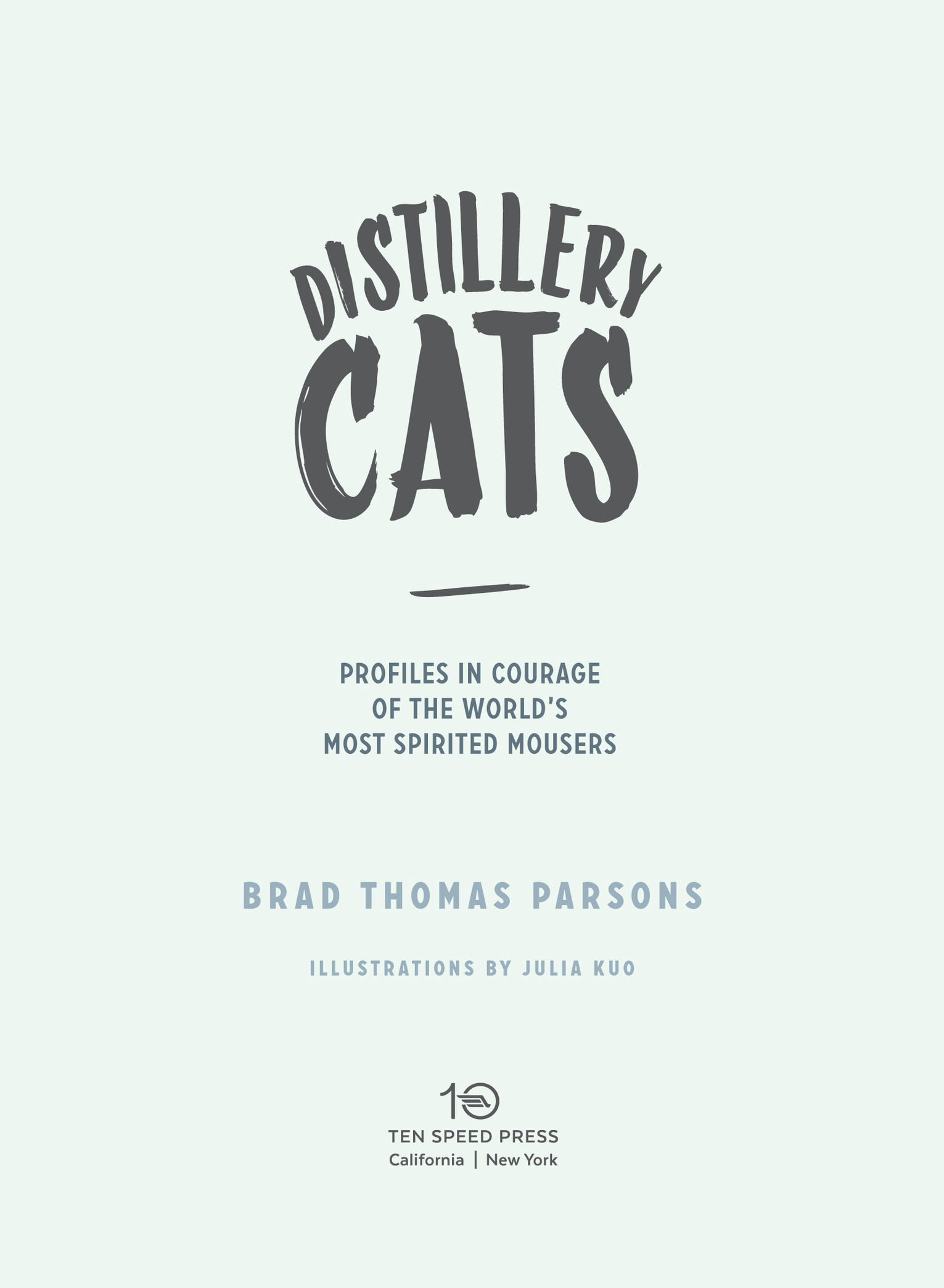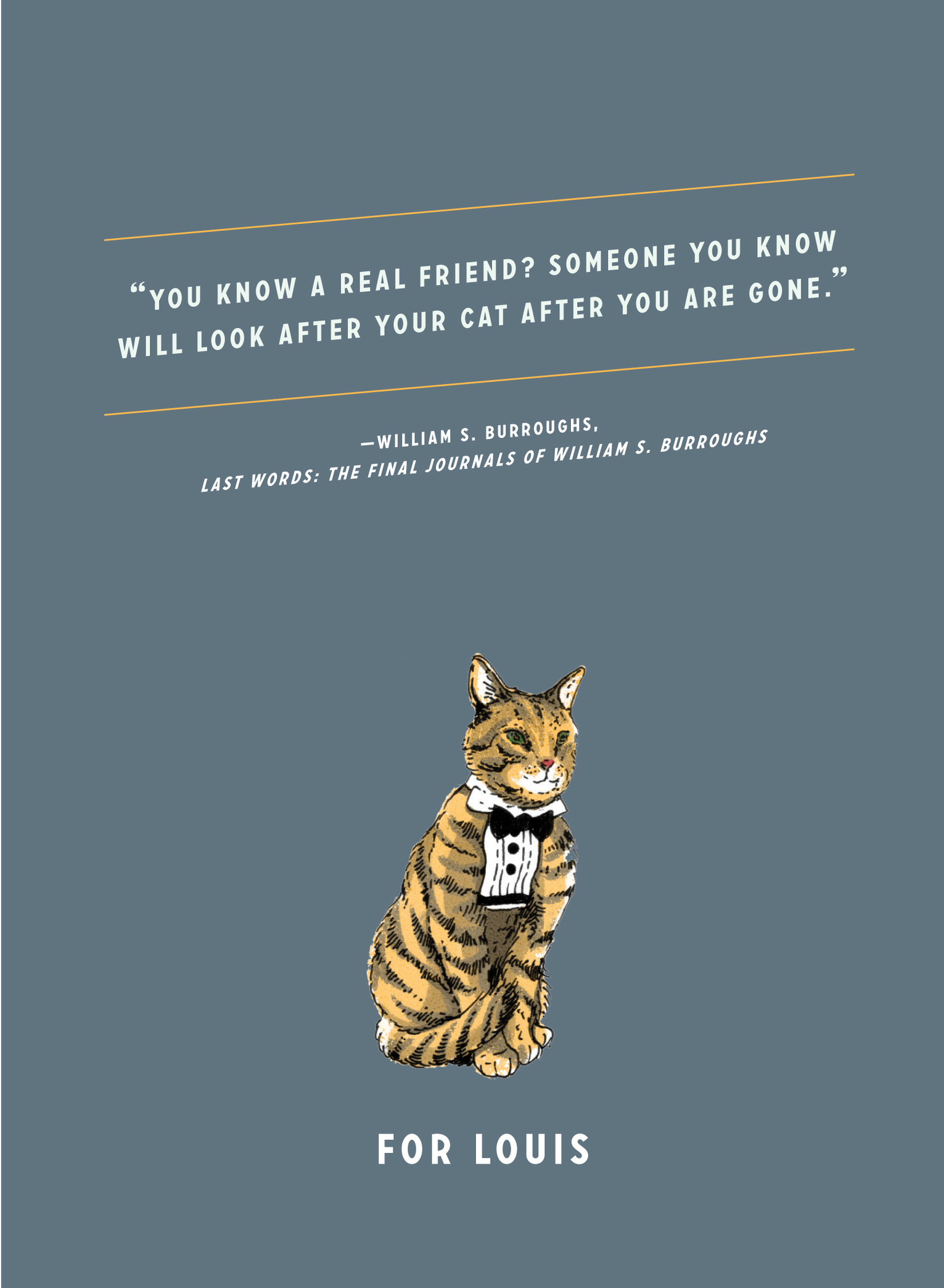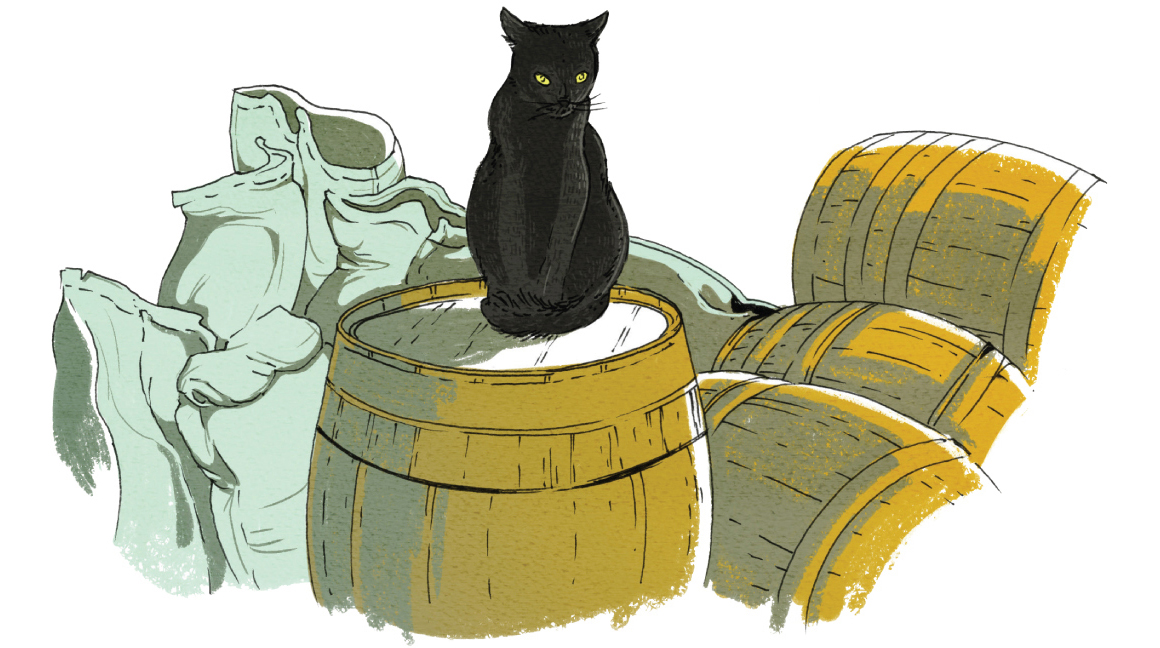All rights reserved.
Published in the United States by Ten Speed Press, an imprint of the Crown Publishing Group, a division of Penguin Random House LLC, New York.
Ten Speed Press and the Ten Speed Press, colophon are registered trademarks of Penguin Random House LLC.
Data in on file with the publisher.
For centuries, cats have been punching the clock, helping out humans with odd jobs at the workplace. Granted, helping may be too generous a word to use when talking about an animal known to sleep up to twenty hours a day. When they are awake, cats tend to keep to their own schedule and rituals, relying on humans for food, water, and clean litter boxes while doling out warmth and affection at their own whimsy.
When pawing through the Help Wanted ads, cats could find a number of job opportunities they might easily qualify for with little or no experience. There are shop cats who earn their keep curling up in chairs, sprawling on counters, and watching passersby from windows at a wide variety of business establishments, including dry cleaners, real estate offices, florists, and liquor stores. Bookstore cats have a pretty nice life, sleeping among the stacks or curling up in a beam of sunlight in the window display, greeting customers in exchange for a quick scratch or extended petting session. Scrappy bodega cats, the feline denizens of urban corner groceries and convenience stores, have become increasingly well-known in recent years, primarily thanks to social media; their country cousins, pastoral barn cats, have been climbing rafters, mingling with chickens, and napping upon stacks of hay for generations. And then there is the major subcategory of spirited cats, the bar cat, a storied tradition in pubs across the United Kingdom.
While having a charming cat lazing about keeping the shopkeeper company and casually greeting patrons is reason enough to employ one, the historic origin of the feline workforce is primarily in pest control. Dr. Fiona Marshall, a professor of archeology at Washington University in St. Louis, Missouri, wrote a study on the historical domestication of cats and in a 2013 interview with Audie Cornish on NPRs All Things Considered notes that while dogs were drawn to humans by the scraps of food they were offered and by the sight of humans hunting, cats, on the other hand, were interested in the by-product of what farmers were growingthe rodents eating the grain.
Enter the distillery cat. (To clarify, Im using distillery cat as an umbrella term that covers brewery cats as well as winery and vineyard catsthe cats that protect our spirits at the source.) For distillers and brewers, wheat, barley, rye, and corn are expensive cash crops, vital to the production of their spirits. For a mouse, rat, or bird, a distillery or brewery may as well be a twenty-four-hour all-you-can-eat buffet. A distillery cats primary qualifications are to be friendly yet possess the instincts of a cold-blooded killer. In the ongoing battle between cat and mouse, mice are typically pretty quick on the uptake when a distillery cat comes on the scene. After seeing their brothers and sisters go missing in action, mice seek a new venue in which to pester and pilfer to avoid winding up on the hit list.
Historically, Ireland and Scotland have a keen tradition of keeping distillery cats on the payroll and are home to some of the most legendary mousers. A long-haired tortoiseshell dubbed Towser the Mouser lived her twenty-four years at the Glenturret Distillery, Scotlands oldest working distillery, where she ended her career with an estimated kill list of 28,899 mice, giving her the honor of being the Guinness Book of World Records World Mousing Champion. The staff at Dublins Jameson Distillery was so enamored of their distillery cat, Smitty, that they had him stuffed after his death. Hes still on display, positioned atop the rafters of the barley room, posthumously greeting visitors and serving as a deterrent to the local mouse population.
In America, as the boom in craft distilleries and breweries continues to spread across the country, theres a new breed of distillery cats stepping into the spotlight. While these first-generation mousers are delivering on their primal instinct and keeping their homes free of mice, theyre also earning their bones in the age of Instagram. These unofficial mascots have become full-fledged brand ambassadors and social-media stars, with many possessing their own dedicated accounts and cat handlers. Their workdays are chronicled online, and taking a selfie with the house distillery cat has become as much a part of the tour experience as free samples of booze. While they still maintain their fiercely independent nature, when theyre not sleeping, hunting, or supervising the staff, the modern distillery cat spends a good chunk of the day mingling with patrons in the tasting room.
While the cats are beloved by most, the looming concern over just how sanitary it is to have them on premises at a distillery or brewery does come up. Some cats have been vetted and approved by the local authorities from the county health department, while others have to keep out of the production facility and stay in the front office. I didnt want to rat out any under-the-radar distillery cats, but when I asked distilleries and breweries about this and if there were any particular state laws on the subject, the replies were an equal amount of shrugs, pleading the Fifth, and a repeated refrain of dont ask, dont tell, although distilleries and breweries that offer food were quick to point out that the cat isnt allowed in the food production area. At most distilleries and breweries, the grain is stored in heavy sacks (which the cat can protect and sleep on, but not eat), and the rest of productionincluding the grain crusher, kettle, and fermenteris part of a closed system to maintain a sterile environment.
As an animal lover and longtime cat enthusiast, I will always look the other way in regard to anti-feline ordinances and immediately grab my phone to take a photo when I see a cat hanging out atop a bar or sprawled across a pile of oranges at my local bodega, and the same goes for distilleries. I started the @DistilleryCats Instagram account to chronicle and celebrate the spirited tradition of working cats at distilleries, breweries, wineries, bars, pubs, cafs, and liquor stores. In these pages, youll read the stories, exploits, and adventures of some of the breakout stars of the new pedigree of American cats embracing their role as guardians of the grain and accidental Internet stars. All cats in the book represent first-generation distillery cats, and nearly all were adopted, rescued from a shelter, abandonment, or life on the streets. The adopt-dont-shop ethos supporting animal shelters is strong in this community, and there are amazing groups across the country with a mission to match up members of feral cat colonies with appropriate workplaces like distilleries and breweries as well as warehouses and farms. Hearing about these cats Dickensian pasts and seeing so many get a second chance at lifeand to be loved with abandonis the most meaningful part of the distillery-cat experience for me. Watching them develop into superstars with their own dedicated fan base is just a perk. Plus, whats not to love about the combination of cats and booze? Lets raise a glass of the good stuff (and pour out a saucer of milk) to distillery cats everywhere.


